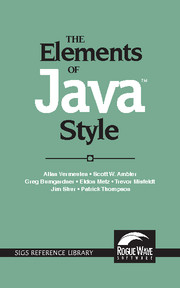Preface
Published online by Cambridge University Press: 07 September 2010
Summary
At Rogue Wave, we sell C++ and Java software components. We have always included source code with our products. Customers often browse through the code to get a feeling, not just for how it works, but for how to write good software. As a result, we have always felt pressure—maybe more pressure than most companies—to have good, consistent style throughout our source code.
As the company grew, making sure programmers were all following the same rules became difficult. To address this, our founder and first programmer, Tom Keffer, wrote 35 pages that explained how we write C++ code at Rogue Wave. We passed the document around and made sure new hires got a copy. It worked. When customers asked how we maintained consistency in our coding, we told them about Tom's “C++ Design, Implementation, and Style Guide,” and sent them a copy. Word spread and we turned Tom's document into a technical report. We sent out thousands of copies and received terrific positive feedback.
When Java came along, we decided we needed a document like the “C++ Guide.” A note went out to our internal [email protected] mailing list soliciting rules for Java use that we should be using. The resulting list of rules became the first draft of the “Rogue Wave Java Style Guide.”
- Type
- Chapter
- Information
- The Elements of Java™ Style , pp. ix - xPublisher: Cambridge University PressPrint publication year: 2000

